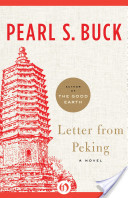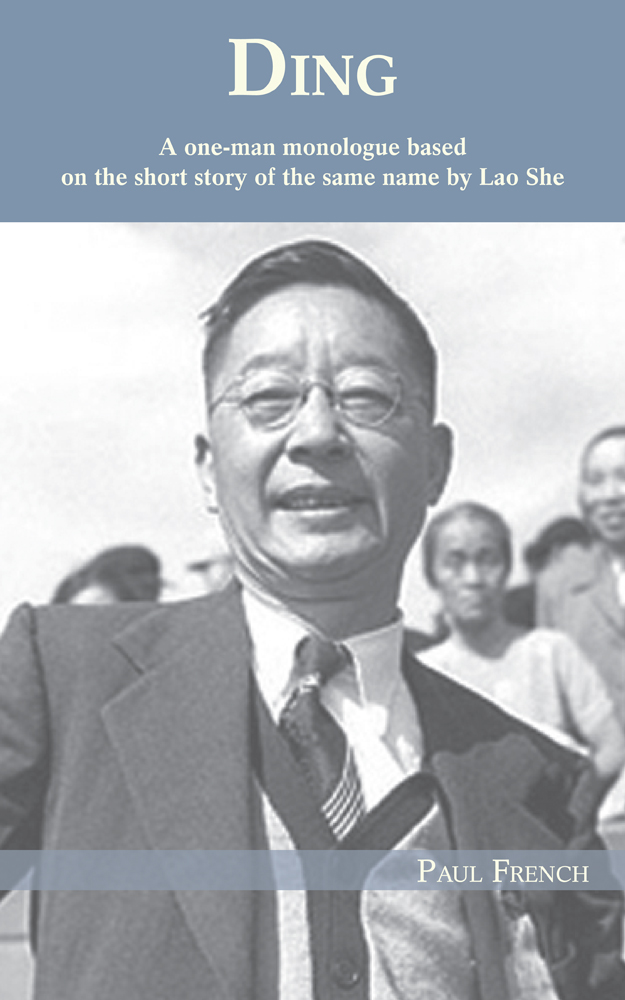Posted: July 26th, 2013 | No Comments »
I note (thanks to The Guardian who included a picture of her on their site) that this week is the 93rd anniversary of the execution of the legendary spy and femme-fatale Mata Hari. A former dancer in Paris, her exotic and provocative routines brought her fame all over Europe and she became a celebrated courtesan with lovers including military and political figures from France and Germany. This ultimately led to her being charged and convicted as a spy during the Great War, although the Germans had dismissed her as an ineffective agent. She was executed by firing squad on 25th July 1917.
Now there is a slight China Rhyming angle to Mata Hari (Margaretha Geertruida Zelle MacLeod) and she’s popped up a couple of times in recent research thinking about the western notion of the Oriental dragon lady (in Foreign Policy) and an essay on Sax Rohmer and Fu Manchu’s images of women (for a forthcoming collection on Rohmer and Fu Manchu – more details to follow when I get a publication date for that collection).Â
I won’t spell out all of Mata Hari’s exciting life (she’s got her own Wikipedia page here) but she did manage to create a create legend about herself as an Asian Godess/femme-fatale. Rohmer himself chose to believe the legend – in a 1932 interview he ruminated on Mata Hari, “who won her way into the secrets of the Allies through her alluring Oriental dancing.†Her described her (as per her own invented legend) as mixed race (her mother was Javanese, her father a Dutch banker in Batavia); manipulated by evil Eastern forces (at 14 her mother placed her with a mystic in an Indian temple to be trained as a dancer); a seducer of men (at 16 she reputedly ensnared Scots nobleman Sir Rudolf McLeod; a murderess (she reputedly murdered a gardener who poisoned one of her sons); and so naturally a spy.
In reality Margaretha Geertruida Zelle, was born in Friesland to white parents who owned a hat shop, though she was a brunette and had darker skin than her parents, leading to rumours of her part-Javanese ancestry. There was no temple at 16 and she met McLeod, a Dutch Colonial Army Captain and only parts Scots, when he advertised in an Amsterdam newspaper for a wife. Her child fell violently ill from complications relating to the treatment of syphilis contracted from his parents – no vengeful gardener in sight. The marriage fell apart, Margaretha returned to Europe and, incorporating elements of traditional Javanese dance she’d seen while living in the Dutch East Indies, became an exotic dancer with her trademark headdresses and be-jewelled dresses.
And so, on the anniversary of her execution, one woman who embraced Orientalism and Chinoiserie (or Dutch East Indies style) and ended up in a lot of trouble….




Posted: July 25th, 2013 | No Comments »
Looking for a present for that Yellow Peril arch Oriental super villain in your life? Look no further than e-bay….

The tasteful, and not at all sterotypical and racist, Mighty Beanz Fu Manchu toy….get the young’uns off to a good start Yellow Perilling….

the self-adhesive Chinaman moustache is guaranteed to be a hoot at any Yellow Peril fancy dress dinner party you may be called upon to attend….
Posted: July 24th, 2013 | No Comments »
Until I blogged yesterday about a new re-issue of Pearl S. Buck’s Letter from Peking I hadn’t really realised how many covers past editions of the book have amassed. I’ll put my favourite of the ones I’ve seen first and then a selection of others….








Posted: July 23rd, 2013 | No Comments »
Buck’s Letter from Peking is one of her lesser known works, certainly less well known than The Good Earth – still, it’s worth a read and just been re-published…

At the outbreak of war, a half-Chinese man sends his family back to America, beginning an absence punctuated only by his letters, and a son who must make sense of his mixed-race ancestry alone
Elizabeth and Gerald MacLeod are happily married in China, bringing up their young son, Rennie. But when war breaks out with Japan, Gerald, who is half-Chinese, decides to send his wife and son back to America while he stays behind. In Vermont, Elizabeth longingly awaits his letters, but the Communists have forbidden him from sending international mail. Over time, both the silences and complications grow more painful: Gerald has taken up a new love and teenager Rennie struggles with his mixed-race heritage in America. Rich with Buck’s characteristic emotional wisdom, Letter from Peking focuses on the ordeal of a family split apart by race and history.
Â
This ebook features an illustrated biography of Pearl S. Buck including rare images from the author’s estate.
Posted: July 22nd, 2013 | No Comments »
RAS WEEKENDER – PHOTOGRAPHY EXHIBIT
 Liu Heung Shing: Photographs as the Pulse of Daily Life
Saturday 27 July 2013, 4 PM
Hosted by M on the Bund
in conjunction with the Royal Asiatic Society Shanghai
Entrance RMB 75 includes a drink
No booking required

Pulitzer prize-winning photographer HS Liu shares images from 30 years of photographing China, featured in his upcoming photographic exhibition, China Dream, Thirty Years: Liu Heung Shing Photographs. He discusses 30 years of photographing the People’s Republic and the ability of the photographic image to capture zeigeist, with special reference to the 1980s and 1990s. A conversation with Jean Loh.
Liu Heung Shing is a former foreign correspondent and photojournalist who has covered China, the U.S., India, South Korea, and the former Soviet Union. Named one of the 100 most influential people in contemporary photography by Paris Photo, he is also the author of several widely acclaimed books. These include China After Mao (1983) and his latest, China, Portrait of a Country (2008). His work has won numerous awards, including the Pulitzer Prize for Spot News Photography shared with his colleagues at the Associated Press for their coverage of the collapse of the Soviet Union. His exhibition, China Dream, Thirty Years: Liu Heung Shing Photographs is at the China Art Museum, Shanghai, in July.
Â
Jean Loh is the curator of Beaugeste Photo Gallery in Shanghai. The gallery, which opened in 2007, specializes in Chinese contemporary photography. Jean, who was named “Gallerist of the Year” in 2011 by Photographers’ Companion magazine, presents themed works by the best Chinese contemporary photographers in bimonthly cycles.
Posted: July 21st, 2013 | No Comments »
Regular readers may recall that last March I adapted a 1935 short story by Lao She – Ding – as a one man monologue piece for the Beijing International Literary Festival. The piece, directed by Beijing based director Fabrizio Massini and with a soundscape by George Holloway was performed by a young Chinese actor Wang Xuankun. It was staged after a presentation by Anne Witchard, the author of the book Lao She in London.
Anyway, I’ve uploaded to Amazon an e-book version of the adapted script of the story along with an essay by Anne Witchard – Ding: Lao She’s Modernist Day Out at the Beach – and some pictures of the performance. A stunning bargain at just 77p on Amazon.co.uk or US$1.15 on Amazon.com.

Posted: July 20th, 2013 | 2 Comments »
Apparently it was…Potter and Moore’s Old English Mitcham Lavender. In its day a classic brand despite the fact that in 2013 thoughts of Mitcham do not perhaps immediately turn to the old lavender fields. However Potter and Moore were famous for their perfumes and aftershaves based on Mitcham lavender which was launched in 1927. It certainly seems to have been the best seller at Suzette’s perfume shop on the Yuen Ming Yuen Road.

Posted: July 19th, 2013 | No Comments »
Whenever I’ve wanted to have some fun with Xinhua journalists doing profile pieces this is my little recipe – they always insist on asking your university (not too difficult) and your age (always provokes a slight reaction!!), and then what’s your favourite Chinese city? – my answer has always been Taipei – the number of times this answer has been printed? Zero. Anyway, I still maintain that Taipei is my favourite Chinese city for all the reasons you’d expect but the literature on the city is precious little as most, even quite seasoned China Hands, rarely if ever go there – which is a shame.
Anyway, perhaps Joseph Allen’s Taipei: City of Displacements resolves some of those errors by being an entire book about that great city. I hope so…and here’s the details…

This cultural study of public space examines the cityscape of Taipei, Taiwan, in rich descriptive prose. Contemplating a series of seemingly banal subjects – maps, public art, parks – Joseph Allen peels back layers of obscured history to reveal forces that caused cultural objects to be celebrated, despised, destroyed, or transformed as Taipei experienced successive regime changes and waves of displacement. In this thoughtful stroll through the city, we learn to look beyond surface ephemera, moving from the general to the particular, to see sociocultural phenomena in their historical and contemporary contexts.
Joseph R. Allen is professor of Chinese literature and cultural studies at the University of Minnesota, Twin Cities.
“Through the prism of Taipei’s development, Allen masterfully covers many aspects of visual culture in Taiwan during the past century. The book details cultural debates with insight and draws on many visual forms. Taipei is bound to become a prime source on Taiwan culture.” – Yomi Braester, author of Painting the City Red: Chinese Cinema and the Urban Contract


















